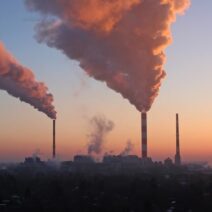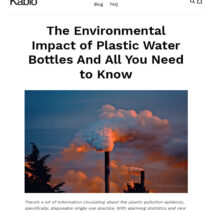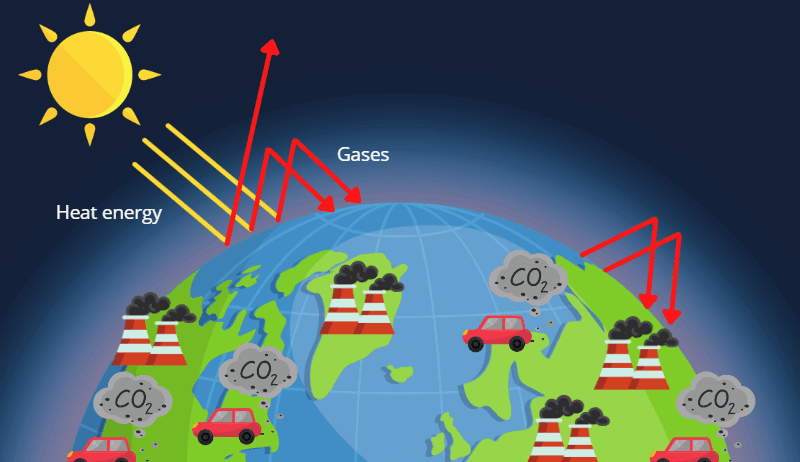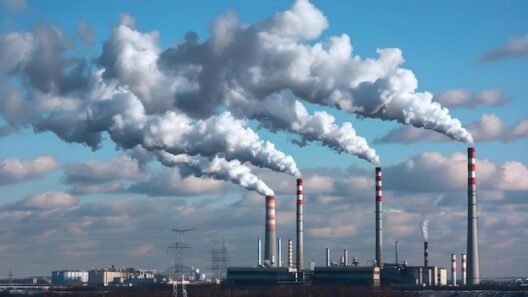The world stands at a precipice, and the factors contributing to our climate plight are manifold. Among these, chlorofluorocarbons (CFCs) emerge as an insidious player in the narrative of climate change. Often remembered predominantly for their role in stratospheric ozone depletion, CFCs remain a persistent threat that merits deeper examination. The broader implications of these compounds warrant attention beyond mere historical context. Unraveling the enigma surrounding CFCs reveals an interconnection between atmospheric chemistry and real-world consequences that could redefine our understanding of environmental challenges.
CFCs, once mainstream in refrigeration, aerosols, and solvents, have vacated the limelight over the past few decades due to international accords like the Montreal Protocol. This agreement effectively curtailed their production, presenting a paradigm shift in how we view halogenated compounds. However, this regulatory victory has led to a false sense of security. Many assume that the threat of CFCs has dissolved along with their manufacturing quotas. Yet, the reality is far more complex, as we will soon explore.
To comprehend the continuing menace posed by CFCs, one must first grapple with their chemical structure and behavior. CFCs, consisting of chlorine, fluorine, and carbon, are exceptionally stable compounds. This stability means that once released into the atmosphere, they persist for decades, even centuries. Upon reaching the upper atmosphere, ultraviolet radiation triggers a reaction that releases chlorine atoms, which then catalyze the destruction of ozone molecules. Each chlorine atom can deplete thousands of ozone molecules, rendering CFCs devastating to the ozone layer—a layer essential for shielding Earth from harmful ultraviolet radiation.
Although global efforts have diminished their presence in industrial uses, CFCs are still released into the environment from older refrigeration and air conditioning units, foam-blowing agents, and even certain industrial processes. A particularly poignant point is that many developing nations, still reliant on older technologies, continue to utilize CFCs. As technology progresses in more affluent countries, they often export outdated systems to these regions, inadvertently prolonging the lifecycle of CFCs. The potential for leaks and emissions remains, further threatening the already fragile balance of our atmosphere.
The repercussions of CFC emissions extend beyond mere ozone layer depletion. The intricate web of environmental interactions means that CFCs substantially contribute to global warming as well. While they are not the primary culprits compared to carbon dioxide or methane, CFCs possess a global warming potential (GWP) thousands of times greater than that of carbon dioxide. Their ability to trap heat in the atmosphere makes them significant players in the climate crisis. In a world where every fraction of a degree matters, the understated presence of CFCs becomes alarming.
Moreover, CFCs can catalyze additional effects on the climate. The depletion of the ozone layer allows for increased ultraviolet radiation to reach the earth’s surface, which can disrupt entire ecosystems. This disruption can have cascading effects on food chains, water systems, and biodiversity—all of which are crucial components of a stable climate. The indirect threats posed by CFCs illustrate the surreal complexity of addressing climate issues: a single element of atmospheric chemistry can unearth substantial ramifications for life itself.
Incidentally, addressing the CFC menace is vexed by socio-economic factors. Nations reliant on older technologies might lack the resources or incentive to transition to more sustainable alternatives. Solutions like natural refrigerants and cutting-edge cooling technologies offer a glimmer of hope, but these technologies come with upfront costs and require infrastructure development that many regions may not afford. This disparity creates a dual problem: on one hand, wealthy nations can leverage progress while, on the other, lower-income nations struggle with the ramifications of inaction.
The evolution of regulation surrounding CFCs further complicates the narrative. Although widespread legislative measures are in place, challenges remain in enforcement and adherence. Without global cooperation, rogue emissions from non-compliant entities can negate the hard-won progress so far achieved. This situation calls for renewed vigilance and cooperation on international platforms. The global community must fuse efforts to invest in education and resources to propagate sustainable practices everywhere.
As the dialogue around climate change continues to evolve, so too must our perspective on CFCs. To dismiss them as relics of the past obfuscates the real, ongoing peril they pose. The ecological ramifications create a feedback loop: climate change exacerbates ozone depletion, and continued ozone depletion, in turn, intensifies climate change. Thus, inexorably linking these two variables makes a compelling argument for discerning the true impact of chemicals that were once hailed for their safety and efficacy.
Consequently, enhancing public understanding is paramount. Few individuals are aware of the magnitude of CFC emissions and their climatic ramifications. Educational initiatives can cultivate an informed public that recognizes the interconnectedness of our actions and the environment, galvanizing advocacy for both modern technology adoption and stringent policies. Informed populations can pressure governments and corporations alike to uphold environmental integrity, pushing for changes that reflect reality, not just convenience.
In essence, the saga of CFCs narrates not only a biochemical story but also reflects humanity’s broader relationship with technology, regulation, and sustainability. To consider CFCs merely an industrial footnote oversimplifies a multi-dimensional problem. As environmental stewards, it is our responsibility to dissect the intricacies of such pollutants, ensuring that their story is not buried in the annals of history. Acknowledging their longevity and potency is critical as we chase after solutions that will ultimately inscribe a more sustainable future in our climate narrative.
Ultimately, the truth about CFCs extends beyond historical regulations. It is a clarion call for comprehensive understanding, global cooperation, and tenacious advocacy aimed at mitigating their continuing threat. The journey toward a healthier planet hinges on our willingness to confront these lingering challenges with clarity, resolve, and innovative solutions.






